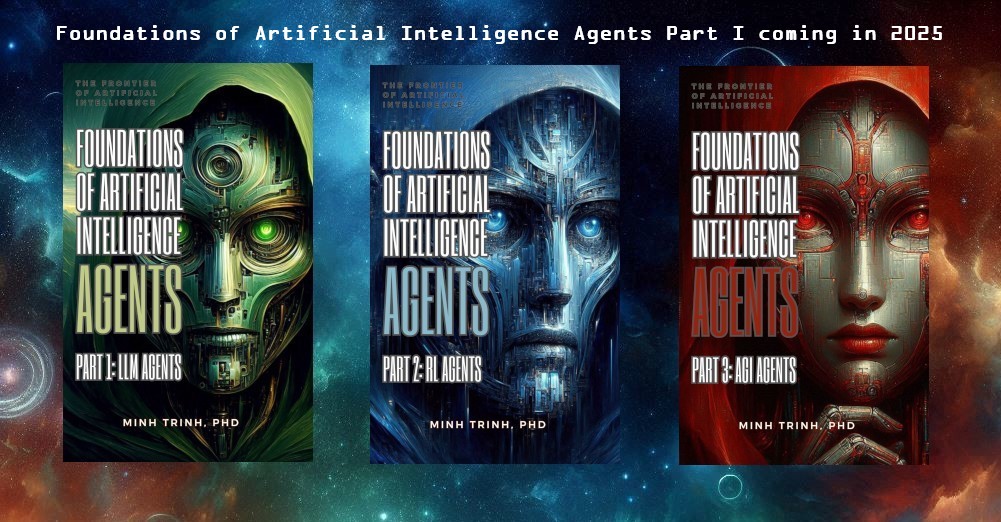This is an interesting interview of MIT Professor Max Tegmark the author of Life 3.0: Being Human in the Age of Artificial Intelligence. In his book he discusses the current state of AI and future scenarios of life when AI exceeds human intelligence.
Why Should I Trust You?
A challenge of complex machine learning models is to develop trust in the models. If it is a black box some users might not be feel comfortable using them. Models need to be interpretable, meaning that users should be able to understand how the outputs (predictions) are generated from the inputs (features).
Different approaches have been suggested. A recent one is a technique called Local Interpretable Model-agnostic Explanations (LIME). LIME approximates a model with an interpretable model locally. An interpretable model is a model such as linear models with a limited number of features.
A short video introduces the approach.
You can read the paper here.
Gradient Boosting Machine Learning
Machine learning has a long list of methods to learn from data. Among them is gradient boosting machine learning as taught here by Professor Trevor Hastie from Stanford University. In this video, he introduces and compares decision trees, bagging, random forests and boosting.
He has authored an excellent book, The Elements of Statistical Learning than you can download here.
AI Code
The UK House of Lords recently published a report on “the economic, ethical and social implications of advances in artificial intelligence.” It suggested an AI Code to reassure the public that AI will not undermine it. The principles are:
(1) Artificial intelligence should be developed for the common good and benefit of humanity.
(2) Artificial intelligence should operate on principles of intelligibility and fairness.
(3) Artificial intelligence should not be used to diminish the data rights or privacy of individuals, families or communities.
(4) All citizens have the right to be educated to enable them to flourish mentally, emotionally and economically alongside artificial intelligence.
(5) The autonomous power to hurt, destroy or deceive human beings should never be vested in artificial intelligence.
This reminds us of course of Asimov’s Three Laws of Robotics:
(1) A robot may not injure a human being or, through inaction, allow a human being to come to harm.
(2) A robot must obey the orders given it by human beings except where such orders would conflict with the First Law.
(3) A robot must protect its own existence as long as such protection does not conflict with the First or Second Laws.
We believe that it is only the beginning of our reflections on how to regulate AI. There is already some work on legal liabilities of AI. You can read this interesting paper on Artificial Intelligence and Legal Liability.
Computing Machinery and Intelligence
One of the most seminal papers written on artificial intelligence was by Alan Turing in 1950. The paper describes the famous Turing test to determine if machines can think. We encourage you to read it.
Alan Turing calls it the Imitation Game. It involves three parties A, B and C. A is the machine, B is a human and C interacts with both A and B by text to figure out if A is a human or a machine and B is helping C. If the probability of success of C does not change whether A is a human or machine then Turing suggests that “machines can think”.
This indirect approach has the advantage of being more objective that directly addressing the question of whether a machine can think. The disadvantage is that it does not differentiate between pretending to think and thinking. A very good imitation could win the imitation game!
It was also mentioned in the movie The Imitation Game:
https://www.youtube.com/watch?v=IwVzwsam1NM
We feel that the question has now be answered at least in some specific domains such as games (see AlphaGo). It is now demonstrated that computers can be better than humans. It would be strange to still argue that computers do not think when hard thinking humans cannot beat them in such intellectual tasks.
Some confusion arises when thinking and consciousness are deemed to be equivalent. Turing cites the objection of a Professor Jefferson:
[The Argument from Consciousness] This argument is very, well expressed in Professor Jefferson’s Lister Oration for 1949, from which I quote. “Not until a machine can write a sonnet or compose a concerto because of thoughts and emotions felt, and not by the chance fall of symbols, could we agree that machine equals brain-that is, not only write it but know that it had written it.
No mechanism could feel (and not merely artificially signal, an easy contrivance) pleasure at its successes, grief when its valves fuse, be warmed by flattery, be made miserable by its mistakes, be charmed by sex, be angry or depressed when it cannot get what it wants.”
If we consider birds it is clear that they are thinking creatures. We do not know if they are conscious though some researchers believe that consciousness is not restricted to humans (see The Cambridge Declaration of Consciousness).
Now if we compare AlphaGo to a bird, it is easier to conclude that AlphaGo is thinking as much as a bird and is even “smarter” than a bird in many domains. We do not need to investigate if AlphaGo has a conscience.
On the last point we note that some recent research of the Theory of the Mind seems to give a machine the ability to represent mental states of others including their desires, beliefs and intentions. It might be possible for the machine to apply the same model to itself. This will make the machine close to being conscious. This will be subject of another post.
Welcome to Rodeo AI
Rodeo AI is an economics blog on data science, machine learning and artificial intelligence (AI). We plan to explore the exciting field of AI, its recent developments, its applications and its consequences from an economist’s perspective. We want to explore how these new fields can help improve the economist’s work but also how economics can be useful to the data scientist, machine learning and AI specialist.

